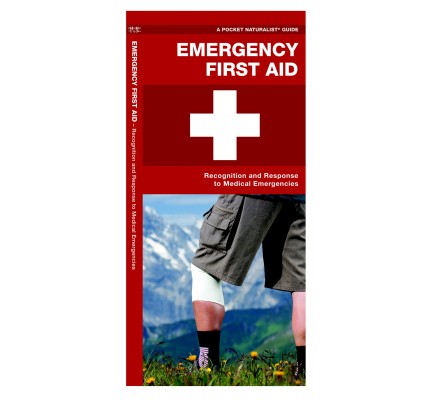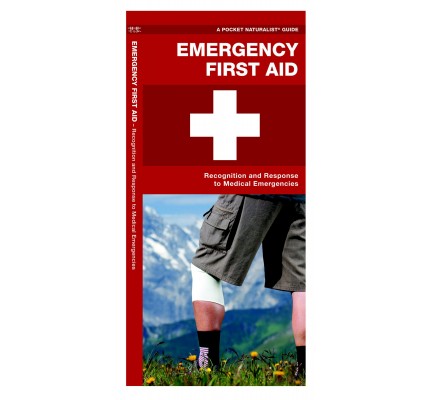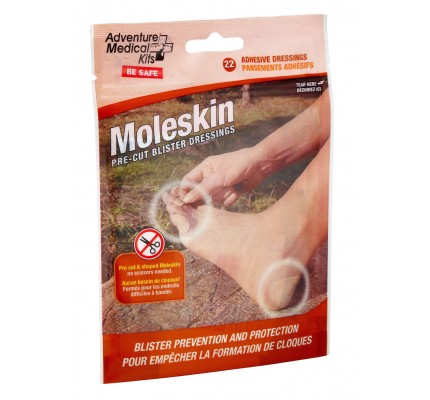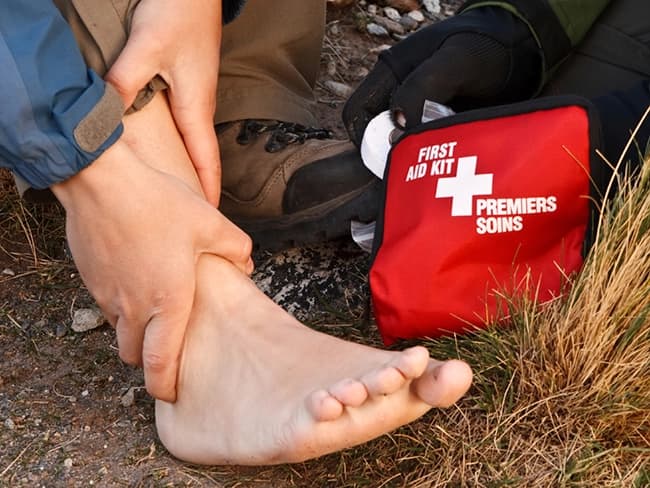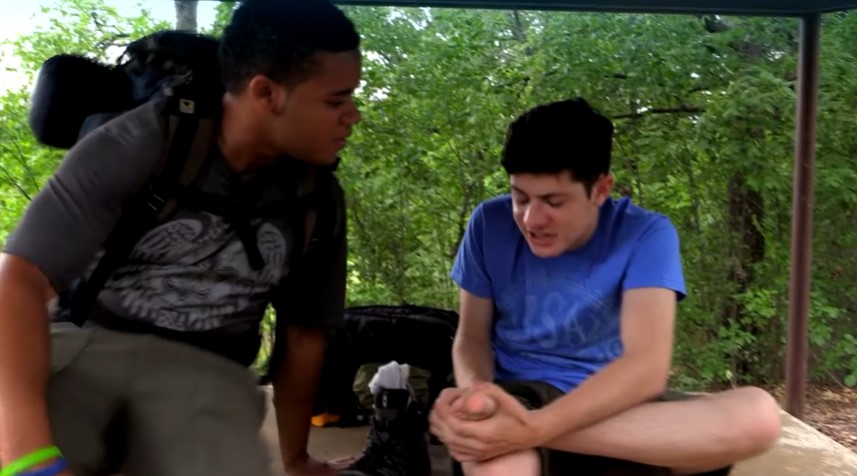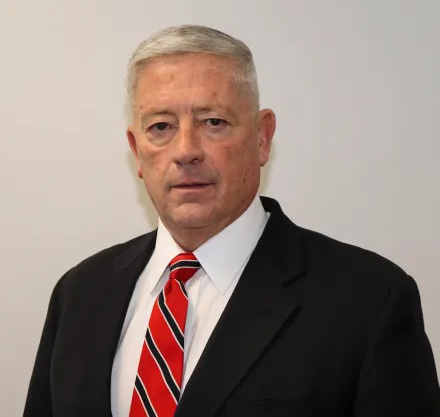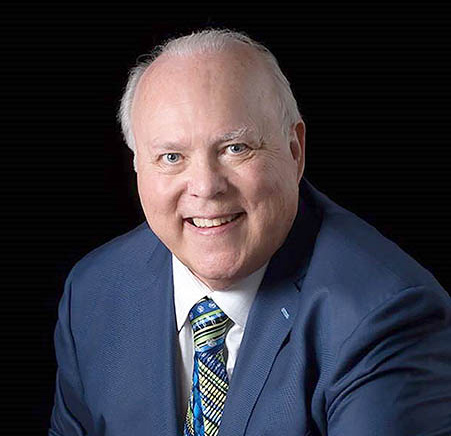First Aid Merit Badge
 Eagle Required
Eagle Required
First Aid
Merit Badge
Scouting America Merit Badge Hub
Scouting America
Merit Badge Hub
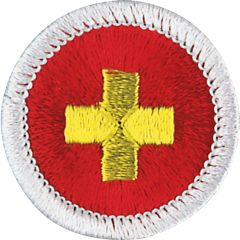
Requirement Updates 2025
This Merit Badge’s Requirements have recently been updated in 2025 Scouting America Requirements (33216). Please read more about “Requirements” on the Merit Badge Hub homepage. The previous version of the Merit Badge requirements can be found in Scoutbook.
First Aid Merit Badge Overview
First aid—caring for injured or ill persons until they can receive professional medical care—is an important skill for every Scout. With some knowledge of first aid, a Scout can provide immediate care and help to someone who is hurt or who becomes ill. First aid can help prevent infection and serious loss of blood. It could even save a limb or a life.
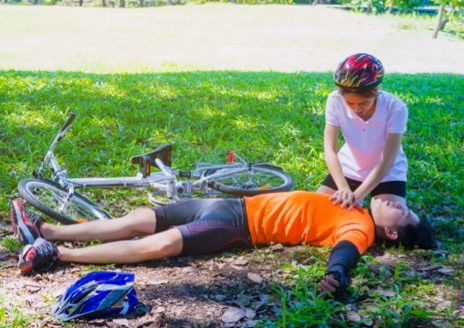
First Aid Merit Badge Requirements
The previous version of the Merit Badge requirements can be found in Scoutbook
The requirements will be fed dynamically using the scout book integration
1.
Handling a First Aid Emergency. Do the following:
- (a) Explain the steps necessary to assess and handle a first aid emergency, including a safety evaluation of the scene.
- (b) Tell how you would obtain emergency medical assistance from your home and from a remote location on a wilderness camping trip.
- (c) Demonstrate the precautions you must take to reduce the risk of transmitting an infection between you and the victim while administering first aid, including the safe disposal of used first aid supplies.
- (d) Demonstrate evaluation of and management of a patient's airway and breathing.
- (e) Demonstrate a thorough examination of an accident victim.
- (f) Discuss why shock is an emergency.
- (g) Define the term triage and describe examples of triage situations that you may encounter.
2.
Preparing for First Aid Emergencies. Do the following:
- (a) Obtain a copy of the Scout Annual Health and Medical Record and discuss the importance of the form including information on immunizations, allergies, medications, health history, and medical examinations to providing first aid at Scouting events.
- (b) Using checklists provided in the First Aid merit badge pamphlet or ones approved by your counselor, do the following:
- 1. Assemble a personal first-aid kit for hiking and backpacking. Demonstrate the proper use of each item in your first-aid kit to your counselor.
- 2. With your counselor, inspect a unit, home, vehicle, or camp first-aid kit and discuss your findings.
3.
Wounds with No External Bleeding. Describe the symptoms and signs of, show first aid for, and explain prevention of these wounds:
- (a) Closed wounds, such as a bruise (contusion) or a hematoma
- (b) Superficial, partial thickness, and full thickness thermal (heat) burns or scalds
- (c) Chemical burns
- (d) Electrical burns
- (e) Sunburn
- (f) Snow blindness
- (g) Immersion foot, frostnip, frostbite, and ice burns
- (h) Abrasions, such as chafing and rope burns
- (i) Blisters on the hands, feet, buttocks, and shoulders
- (j) Puncture wounds from splinters, rope splinters, nails, and fish hooks
- (k) Rash from poisonous plants
- (l) Bug bites of chiggers, ticks, mosquitoes, and biting gnats
- (m) Bee stings
- (n) Bites of spiders
- (o) Sting of a scorpion
- (p) Bite of a pet or wild mammal or human
- (q) Bite of a venomous snake.
4.
Bleeding Wounds. Describe the symptoms and signs of, show first aid for, and explain prevention of these wounds:
- (a) A nosebleed.
- (b) An open wound with mild or moderate bleeding, such as a scratch or a scrape (abrasions), or a shallow cut (laceration).
- (c) An open wound with severe bleeding such as a deep cut on an arm or leg.
- (d) Explain when it is appropriate and is not appropriate to use one or more tourniquets. List some of the benefits and dangers of using a tourniquet. Demonstrate the application of a tourniquet without tightening it.
5.
Breathing Emergencies. Describe the symptoms and signs of, show first aid for, and explain prevention of these conditions affecting breathing:
- (a) Choking
- (b) Asthmatic attack
- (c) Anaphylaxis from an insect bite or sting or from food or product allergy
- (d) Inhalation injuries
- (e) Altitude sickness.
6.
Loss of Consciousness. Describe the symptoms and signs of, show first aid for, and explain prevention of these conditions causing loss of consciousness:
- (a) Fainting
- (b) Hypoglycemia
- (c) Seizure
- (d) Drug overdose and alcohol poisoning
- (e) Underwater hypoxic blackout
- (f) Cold water shock and drowning
- (g) Lightning strike and electric shock.
7.
Heart Attack. Do the following:
- (a) Explain what a heart attack is.
- (b) Describe the symptoms and signs of a heart attack and first aid for this condition.
- (c) Describe the conditions that must exist before performing CPR on a person.
- (d) Demonstrate proper CPR technique using a training device approved by your counselor.
- (e) Explain the use of an automated external defibrillator (AED).
- (f) Demonstrate or simulate the proper use of an AED, using an AED training device if available.
- (g) Identify the typical location(s) of one or more AED(s) at public facilities in your community, such as, your school, place of worship, unit meeting place, sports facilities, and/or camp or by using a smart phone app. Discuss the reasons for choosing locations like these.
8.
Muscle and Bone Injuries. Do the following:
- (a) Explain the similarities and differences in a strain, a muscle tear, a tendon rupture, a sprain, a dislocation, a simple fracture, and a compound fracture.
- (b) Describe the symptoms and signs of and first aid for a muscle strain, a muscle tear, and a tendon rupture.
- (c) Describe the symptoms and signs of, and potential complications of, a sprain, a fracture, and a dislocation.
- (d) Demonstrate bandages for these injuries:
- 1. Arm slings for forearm or upper arm or collarbone fractures
- 2. Elastic wrap and cravat bandages for ankle sprain
- 3. Elastic wrap and cravat bandages for wrist sprain or hand injury.
- (e) Demonstrate the proper procedures for handling and splinting of suspected closed or open fractures or dislocations of the:
- 1. Finger and toe
- 2. Forearm or wrist
- 3. Upper leg
- 4. Lower leg or ankle.
9.
Head and Spine Injuries. Do the following:
- (a) Describe the symptoms and signs of, relationships between, possible complications of, and prevention of head, neck, and back injuries.
- (b) Describe the symptoms and signs of and first aid for a concussion.
- (c) Demonstrate first aid for an open head wound with a triangular or other bandage.
- (d) Demonstrate first aid for someone with a suspected neck or back injury.
10.
Moving a Patient. Do the following:
- (a) Describe the conditions under which an injured person should and should not be moved.
- (b) If a sick or an injured person must be moved, tell how you would decide the best method. Demonstrate these methods.
- (c) By yourself and with a partner, demonstrate how to transport a person from a smoke-filled room.
- (d) By yourself and with a partner, demonstrate how to transport a person with a sprained ankle for at least 25 yards.
- (e) With helpers under your supervision, improvise a stretcher and move a presumably unconscious person for at least 25 yards.
11.
Heat- and Cold-Related Conditions. Describe the symptoms and signs of, show first aid for, and explain prevention of these conditions associated with exertion and/or heat or cold exposure:
- (a) Dehydration and over-hydration
- (b) Heat cramps and muscle pain after exertion
- (c) Heat exhaustion
- (d) Heat stroke
- (e) Chest pains associated with cold exposure
- (f) Hypothermia.
12.
Mental Health Conditions. Describe the following:
- (a) Reactions associated with at least three stressful situations, such as mountain backpacking, rappelling, a ropes course, speaking before an audience, making a phone call to an adult, taking a swim test, missing home, lighting a match, trying out for a sports team, meeting someone for the first time, or other stressful circumstances.
- (b) The actions that you and others should take to prepare for and manage these situations.
- (c) The indications that someone might be a danger to themselves or others.
- (d) The actions that you should take if you suspect that someone might be a danger to themselves or others.
13.
Miscellaneous Conditions. Describe the symptoms and signs of, show first aid for, and explain prevention of the following conditions:
- (a) Object in the eye
- (b) Broken, chipped, loosened, or knocked out tooth
- (c) Vomiting and diarrhea associated with food poisoning
- (d) Abdominal pain
- (e) Stroke.
14.
With guidance from your counselor, develop a plan to teach a first-aid skill or topic using the EDGE method. Discuss your skill, topic, and plan with your counselor, and then teach your skill or topic to your family or to one or more Scouts.
15.
Do ONE of the following:
- (a) Visit an emergency medical station house or training center in person. From the medical first responders that you meet during your visit, learn about how they serve their community and about their careers. Discuss with your counselor what you learned during your tour and interviews.
- (b) Interview an emergency medical services professional about their work. Learn about how they chose this career and about their duties. Discuss what you learned with your counselor and whether you might be interested in this career.
- (c) Identify three career opportunities that would use skills and knowledge in emergency medical services. Pick one and research the training, education, certification requirements, experience, and expenses associated with entering the field. Research the prospects for employment, starting salary, advancement opportunities, and career goals associated with this career. Discuss what you learned with your counselor and whether you might be interested in this career.
- (d) Identify how you might use the skills and knowledge in the field of emergency medical services to pursue a personal hobby and/or healthy lifestyle. Research the additional training required, expenses, and affiliation with organizations that would help you maximize the enjoyment and benefit you might gain from it. Discuss what you learned with your counselor and share what short-term and long-term goals you might have if you pursued this.

Get the First Aid Merit Badge Pamphlet
Merit Badge Pamphlets are now free and publicly available. Note: Always check www.scouting.org/skills/merit-badges/all/ for the latest requirements.
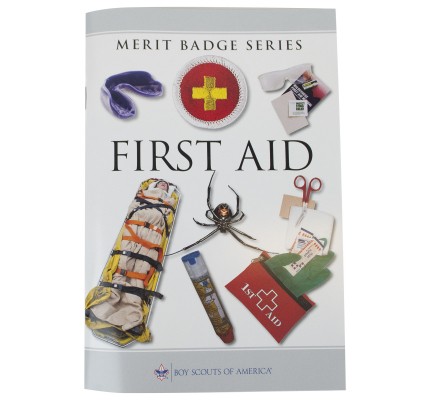
Shop First Aid Merit Badge Products
As the exclusive retailer of Scouting America, 35% of every Scout Shop purchase supports the future of Scouting.
Discover more about "First Aid"

You’re on an outing with your troop when a buddy slips off the trail and messes up his leg. Miles and at least a day’s hike from the nearest trailhead, what are you gonna do?
Hopefully, you have the first-aid training and supplies needed to care for your friend. If not, earn your First Aid merit badge ASAP — and read on for advice on assembling a useful first-aid kit filled with the right contents.
THE LOW DOWN ON FIRST-AID KITS
Build It or Buy It?
The biggest advantage to building your own first-aid kit is knowing the contents of your kit and where it is inside. The hard part is buying everything you need in small enough sizes to keep your first-aid kit light and compact.
But buying a prepackaged first-aid kit often costs less, requires no set up time and usually comes in a specially designed storage bag with handy pockets and compartments.
If you buy a commercially made first-aid kit, just make sure you take everything out of it and then put it back in so you’re familiar with all of the contents and components. Understand what each item is used for so you’ll be prepared, and don’t hesitate to add additional items.
Price
You’ll often save money by buying a prepackaged first-aid kit. A decent first-aid kit can cost as little as $10 to $25.
Customizing a First-Aid Kit
The type of first-aid kit and supplies you bring will be dependent on your group size, trip duration and remoteness. For remote locations you’ll need to rely on your group’s resources, and your first-aid kit should be stocked with supplies to treat a much wider range of injuries or illnesses than for a day hike in the woods.
Make a list of the types of activities you do most often and the sort of places you most often go and how long you’ll be gone, then build or buy a first-aid kit to fit.
firstaid-backpack
What Every First-Aid kit Should Include
Don’t forget to pack a first-aid manual. Nothing takes the place of first-aid training, but it’s important to have a good manual that you can turn to in an emergency. Beyond that, you’ll want to include supplies to treat the most common outdoor injuries — stuff like moleskin for blisters, tweezers for splinters, bandages, antibiotic ointment and antiseptic towelettes for cuts and scrapes, ibuprofen for aches and pain, and antihistamines for allergic reactions.
What You Should Leave Out
Skip the instant ice packs. They’re heavy and only provide about 15 minutes of cold therapy. To properly treat a sprained ankle, you need to ice the injured area every 30 minutes. Use ice from a cooler, snow or cold water from a river or lake if you need to improvise.
And forget the hydrogen peroxide — it’s so strong it kills the germs and living tissue, so it’ll just take longer for your wound to heal. The only solution you need to clean wounds is clean drinking water or a dilute povidone-iodine solution if the wound is particularly dirty.
Keep Your First-Aid Kit Current
Make a contents list so you can keep an inventory of items in your first-aid kit. Get into the habit of checking your first-aid kit before every outing. If any medicines and ointments have expired or have been used up, replace them. And make sure nothing is wet or spoiled.

There’s nothing better than hiking or backpacking in the great outdoors, but a blister can quickly ruin your day. Here are tips for how to avoid getting blisters and how to treat them.
Some of the most common causes of blisters:
Walking around with wet feet.
Wearing boots that are too big and rub against your skin.
Wearing brand new boots on the trail.
To prevent getting blisters from wet feet, always pack an extra pair of socks. You can also pack some foot powder to keep your feet dry.
Before buying new hiking boots, make sure they fit right and snug while wearing a good pair of socks so they won’t rub your feet raw on the trail. Then, make sure you break them in by wearing them a while before going on a hike.
On every hike, you or someone on the trip just bring the following blister prevention and treatment items:
Alcohol wipes for disinfecting a popped blister.
Safety pin and matches if it becomes necessary to pop a blister. The match is used to disinfect the needle.
Foot powder for keeping feet dry.
Petroleum jelly, for reducing friction around tender skin.
Duct tape for covering tender skin or holding bandages in place.
Pocketknife with scissors
Moleskin pads
Most blisters start as a “hot spot,” a red tender spot on the skin. If you treat a hot spot early, you can prevent it from forming a blister. Just use your scissors to cut a hole the size of the hot spot with a piece of moleskin, and use it to encircle the blister. Duct tape can also be used to cover the tender area. It’s a good idea to apply petroleum jelly or another ointment to the hot spot to help reduce friction.
Once a blister forms, you may want to call it a day. But, if you have to keep moving and the blister is too painful, you might need to drain the fluid. Just make sure to sterilize the needle and keep the blister clean.

Descending New Hampshire’s Mount Monadnock in October 2015, a hiker named Linda slipped and twisted her ankle. She might have been in serious trouble, but instead she was in luck. Not long after her accident, members of Troop 9 from Weymouth, Mass., found her, splinted her leg and carted her down the mountain — a four-hour trip — using a fireman’s carry. “They started pulling out their kits, and that’s when I realized they were Boy Scouts,” she told Fox 25 in Boston the next day. “They were just great.”firstaidmb
The emergency-room doctor who treated Linda was surprised at the quality of care she had received, but Troop 9 assistant Scoutmaster Mike Jaklitsch, M.D., wasn’t. A thoracic surgeon with Brigham and Women’s Hospital, Jaklitsch makes sure his Scouts are always ready to use their first-aid skills. As he explained to Scouting magazine, he takes a “use it or lose it” approach to this important badge.
Learn and Earn
Troop 9’s emphasis on first aid starts almost as soon as Scouts join the troop. Each March, the troop participates in Old Colony Council’s Merit Badge University, a three-weekend event where new Scouts are strongly encouraged to earn the First Aid merit badge. Jaklitsch says the class, which takes a total of six hours, is taught by nurses, doctors and EMTs, and includes plenty of hands-on practice with bandages, CPR mannequins and other training tools.
Relearn and Teach
But that class is just the beginning. To complete the First Aid merit badge, Scouts must also complete the first-aid requirements for the Tenderfoot, Second Class and First Class ranks. (That’s actually the first requirement, but it doesn’t have to be completed first.) In Troop 9, the teachers for those requirements are older Scouts. “We really emphasize being boy-led, so it is really important that we have first-aid instructors who are 14, 15, 16 years old and not 56-year-old men,” Jaklitsch says.
That doesn’t mean just any Scout can teach those skills. Instead, Jaklitsch must certify Scouts who want to be Troop 9 “medics.” In less than three hours, interested Scouts must show him they have mastered the skills and can teach them using Scouting’s EDGE method. “If they go through all that, they get a pin that looks like an ambulance they can wear on their hat,” he says. “It’s this little 49-cent piece of swag, but it’s enough to make them want to do it.”
Learn as You Go
Finally, the troop views every incident that occurs on an outing as a teachable moment. “We’re a big enough troop that there are always some injuries in the course of a year,” Jaklitsch says. “We use that as an opportunity at dinnertime or the campfire to say, ‘Hey, remember when Bill had the ankle [injury] today? What did we do? What could we have done better?’ ”
Discussions like that — and the training that precedes them — help keep skills fresh. “It’s constant repetition,” Jaklitsch says. “I don’t think first aid can really stick if you just do it once a year.”


